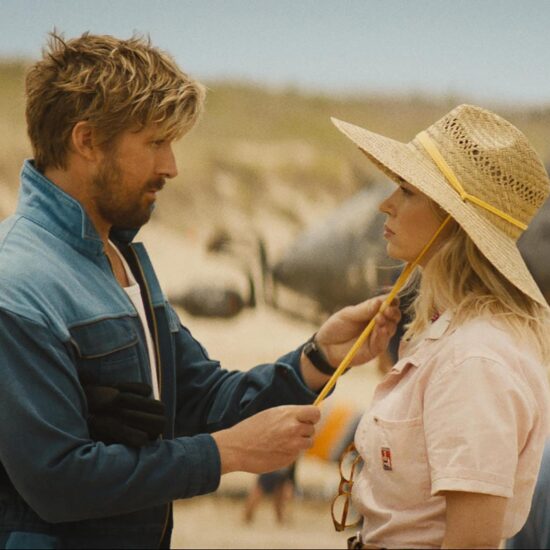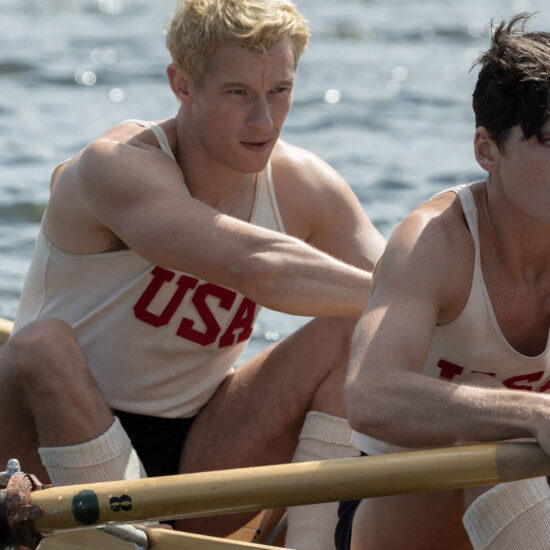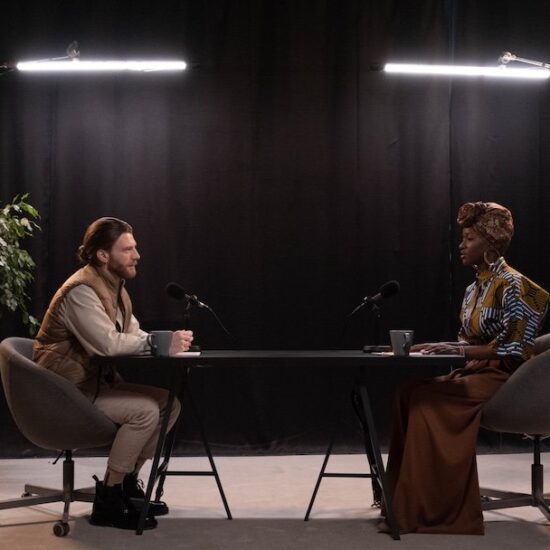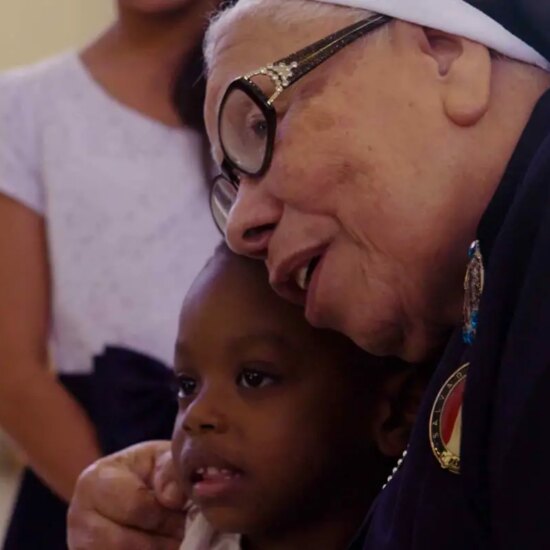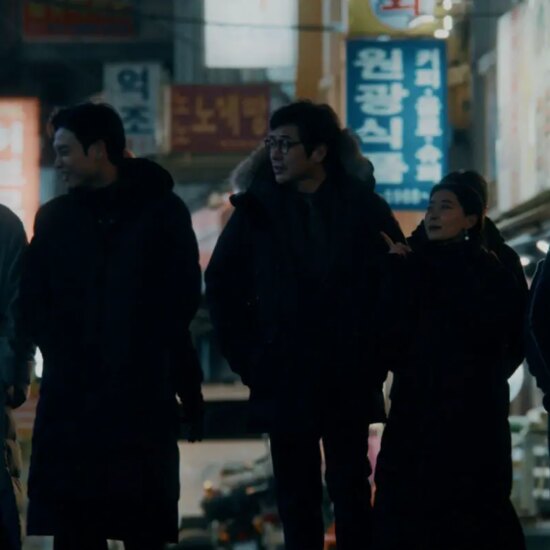
The Walt Disney Company celebrated its 100th anniversary this week, and it did so in style with the release of Once Upon A Studio both on TV and on Disney+. The animated short brings together so many characters from the last 100 years that it’s almost impossible to count them all. Some of them take center stage, while others appear in a “blink and you’ll miss it” fashion, but either way, you’ll need to watch the short more than once to catch everything.
But there’s so much more going on in Once Upon A Studio. From obscure animated characters to the human beings who helped bring them all to life, here are 10 of our favorite moments from the new Disney short that made us smile.
Burny Mattinson
The closing credits of Once Upon A Studio dedicate the film to Burny Mattinson. Mattinson worked for The Walt Disney Company for 70 years, longer than any person before him. Unfortunately, Mattinson passed away earlier this year. He directed Mickey’s Christmas Carol and The Great Mouse Detective, among other great achievements in his career.
But before he said goodbye, he had one other job: appearing as himself at the beginning of Once Upon a Studio. He’s the man who wonders “If these walls could talk,” just what would they say? It made sense to include the longest-serving employee in such a historic film, but it’s unfortunate that he is no longer here to see the film’s release.
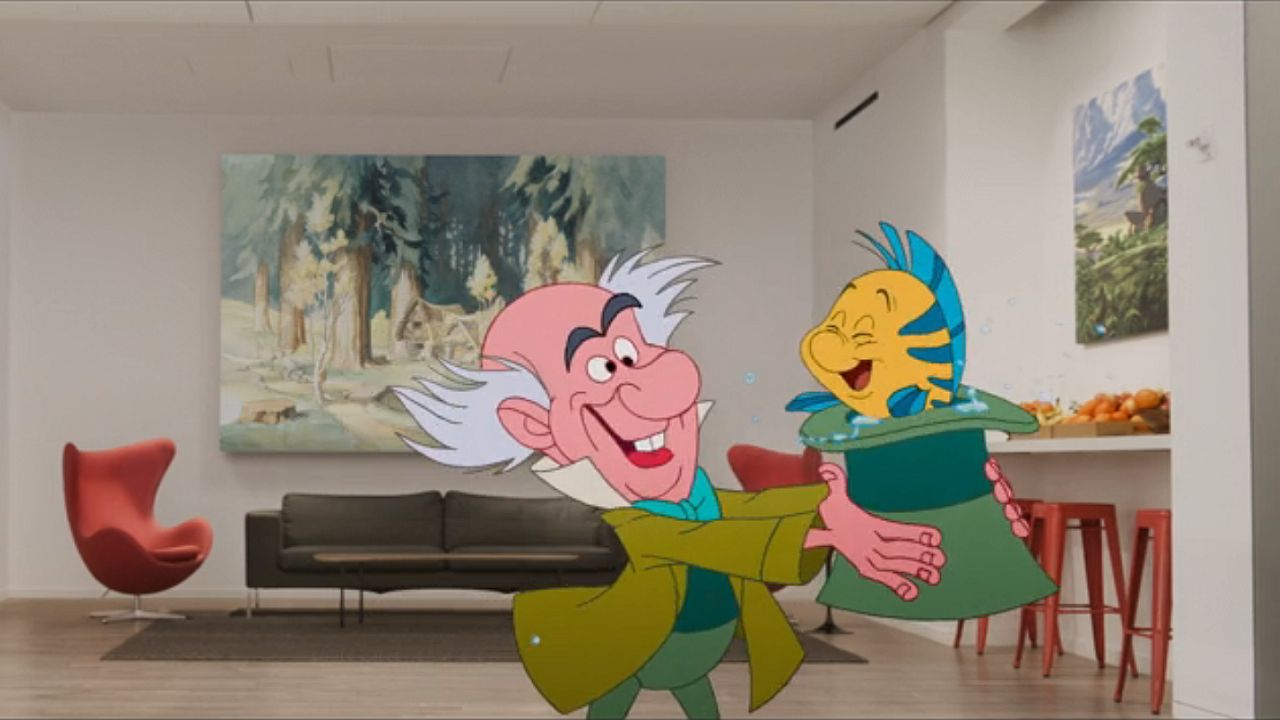
Alan Tudyk
Alan Tudyk is something of a perpetual easter egg in Walt Disney Animation Studios films. Tudyk has voiced many Disney characters in recent years. While he’s performed the likes of Wrck-It Ralph’s villain King Candy and Zootopia Duke Weaselton, he’s just as likely to appear as the voice of a chicken or some other animal.
It’s only fitting that Alan Tudyk appears in Once Upon a Studio, but he doesn’t voice any of the characters that he has brought to life in any Disney films. Instead, he takes on the voice of the Mad Hatter. While most of the Disney characters who speak in the film are either given new lines voiced by their original artist, or dialogue from the original films is recycled, Tudyk takes over the character from Ed Wynne who, originally performed the Hatter in 1951’s Alice in Wonderland, and he does a fantastic job.
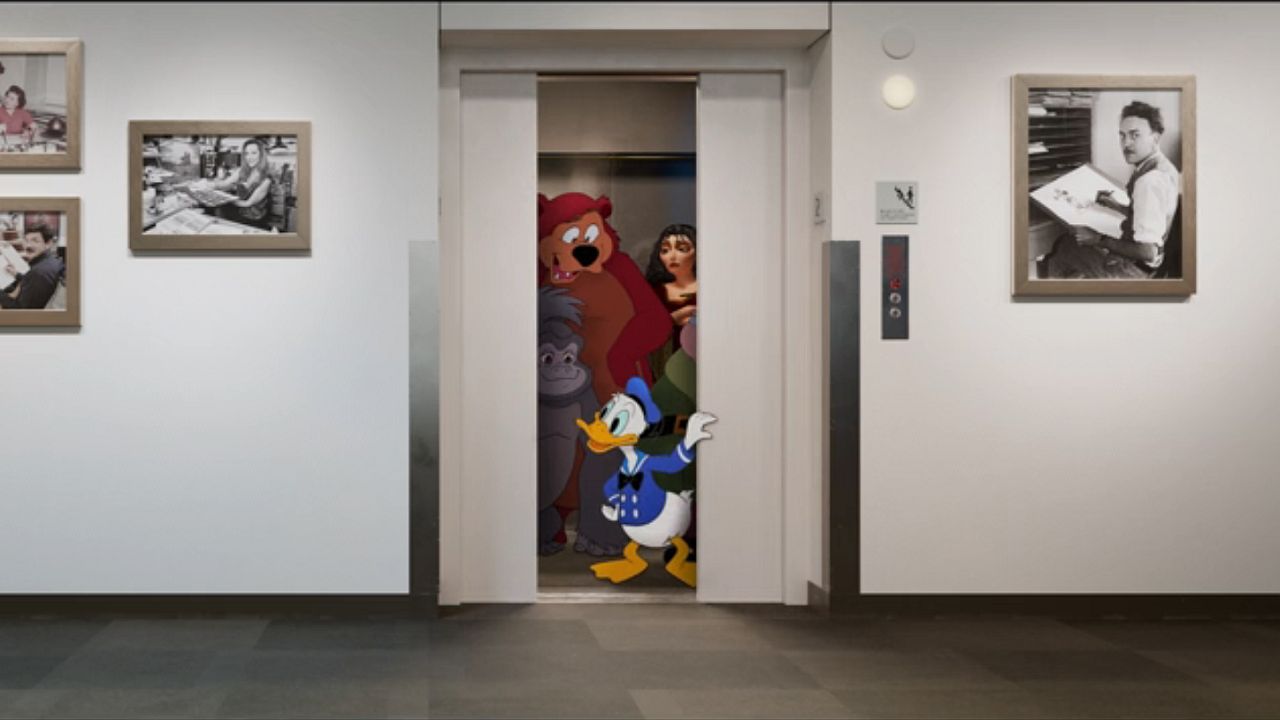
Ub Iwerks
Without question, the most touching moment in Once Upon a Studio is when Mickey Mouse takes a moment to thank Walt Disney. It’s a beautiful sequence. Of course, Mickey actually has a second father, and while he doesn’t get quite the same treatment, he’s also not forgotten.
Some of the coolest stuff to look at during the film is the collection of pictures hanging on the wall of the Roy E. Disney Building. Some of the Disney greats can be spotted if you look closely and know your Disney history. One portrait that features prominently is that of Ub Iwerks, the animator who, along with Walt, designed the original look of Mickey Mouse. He can be seen near the elevator as Donald and the company are waiting for Flash.
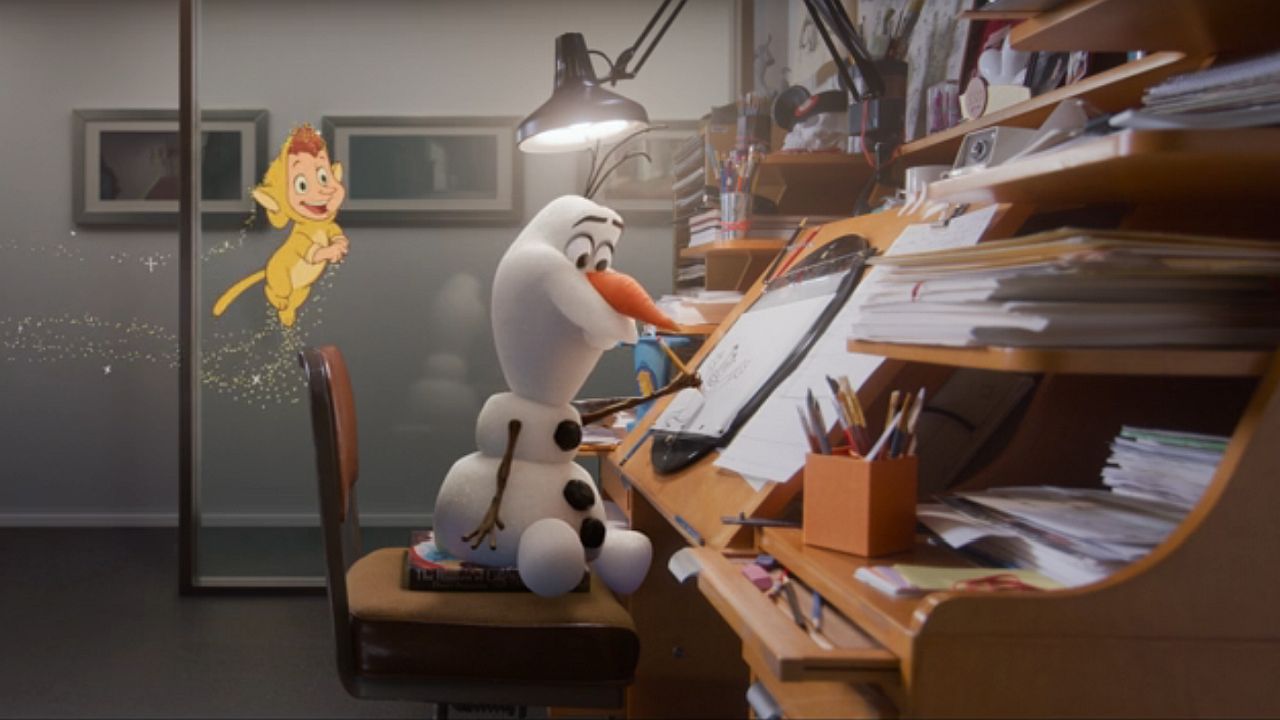
Robin Williams’ Other Character
A lot has already been said about the fact that Robin Williams’ Genie makes an appearance in Once Upon a Studio using unused audio that Williams recorded for the original Aladdin. However, Genie isn’t the only Robin Williams character who appears in the short film.
In the same scene, just before the Genie appears, an unnamed Lost Boy appears behind Olaf. This is actually Robin Williams himself, transformed into an animated character as part of a short film called Back To Neverland that ran as part of the Magic of Disney Animation Attraction at Disney’s Hollywood Studios.
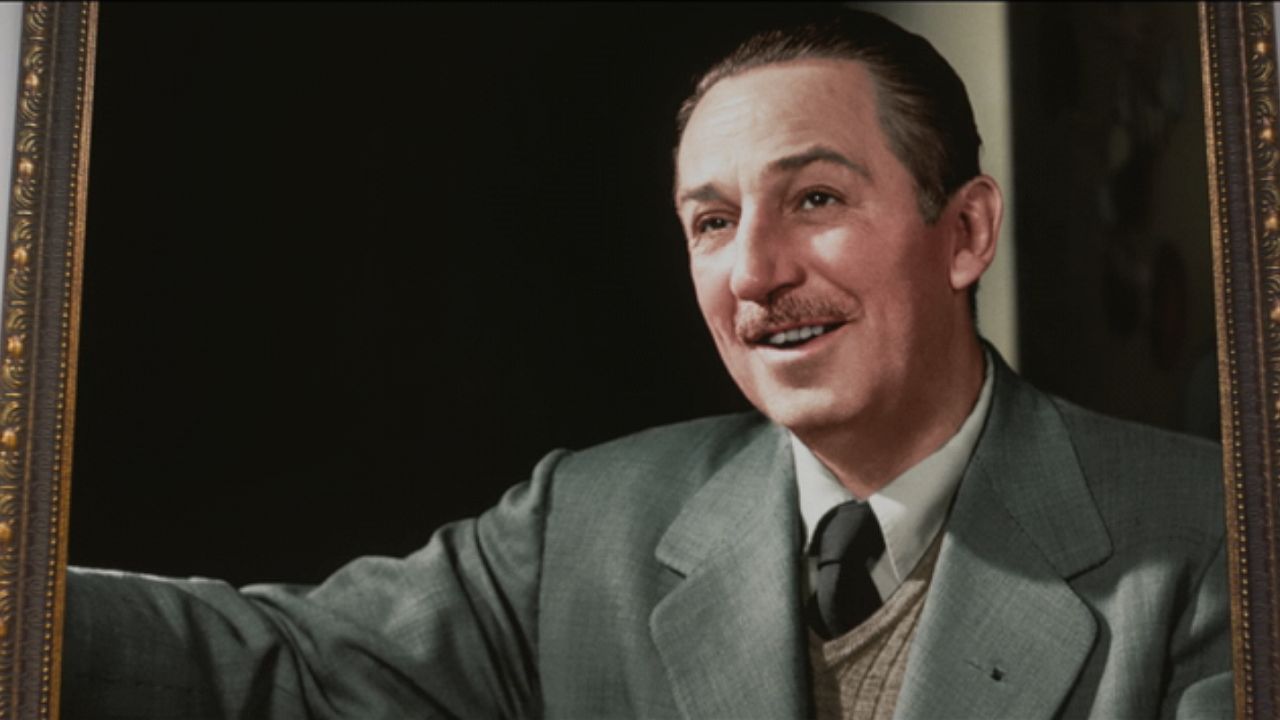
Feed The Birds
When Mickey has his heart-to-heart with Walt Disney, the emotion comes from the music as much as the moment. The song being played in the background is the classic “Feed the Birds” from Mary Poppins. It’s a beautiful song, but it’s especially poignant in this moment.
“Feed the Birds” is known to be Walt’s favorite song ever written by the Sherman Brothers, the songwriting duo behind too many Disney classics to mention. Walt would occasionally walk into their office and simply say “Play it,” and the boys would play the song for him. What’s more, this particular rendition of “Feed the Birds” is performed by Richard Sherman himself on the piano that still sits in Walt Disney’s office at the studio.
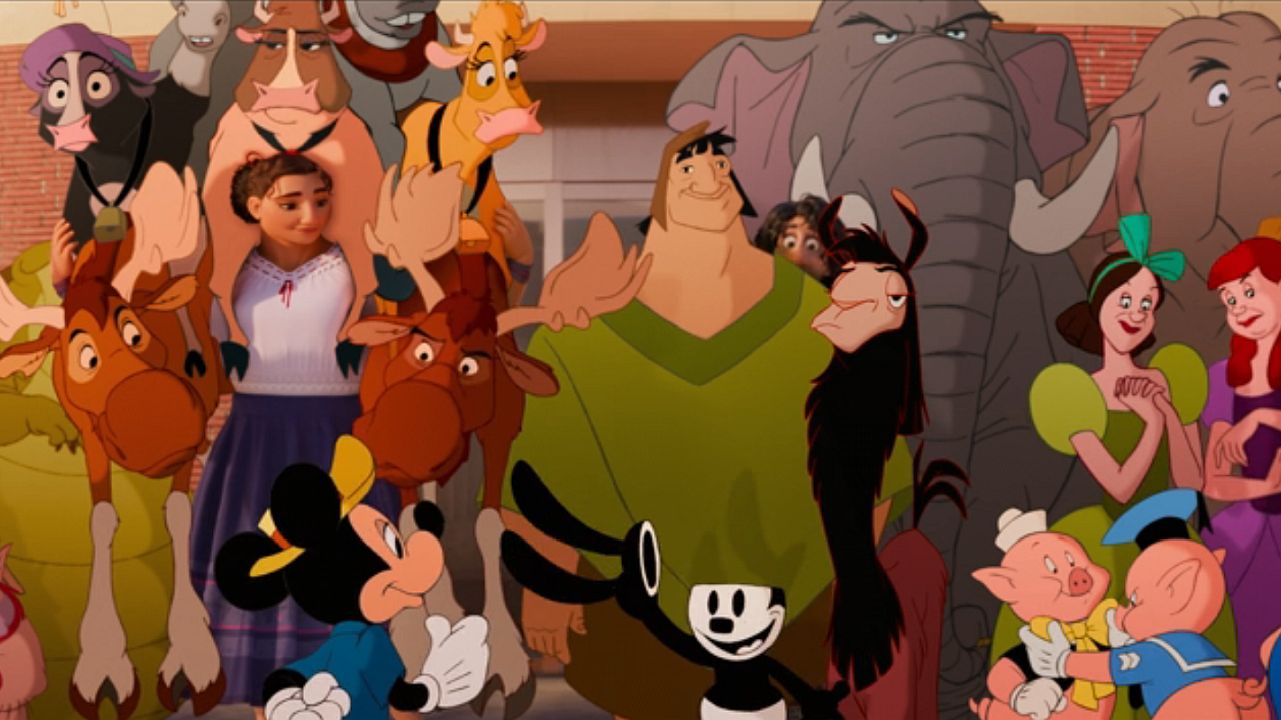
“After You”
When the animated crowd gets together outside the building, there are so many Disney characters to see you’ll need to go frame-by-frame to recognize them all, but one classic character makes himself known when the iconic Oswald the Lucky Rabbit, whose rights were lost to Disney for decades, walks into the frame.
Mickey, ever the polite host, says “After you,” which is the perfect thing for him to say because literally all of this came after Oswald. With the possible exception of Pete the Cat, a version of whom appeared in the early Alice Comedies, Oswald is the oldest character in the history of Disney animation seen in the film.
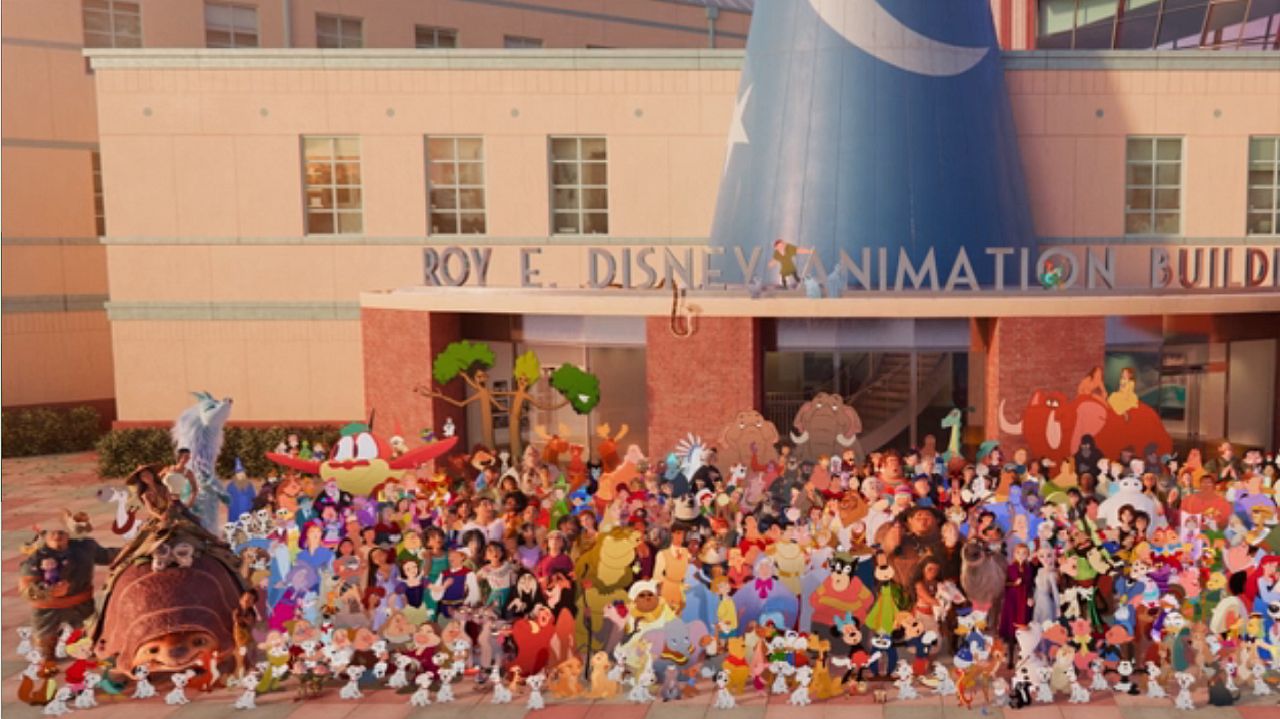
Flowers & Trees And The Skeleton Dance
As the camera pans back to reveal the entire assembled crowd, we see all 100 years of Disney animation in front of us. Many of these characters we’ve seen elsewhere in the film, if only briefly, but there are a couple of newcomers who deserve special recognition.
On the left-hand side, you’ll see three skeletons standing together. These are the starting players from The Skeleton Dance, the first of the Silly Symphonies cartoons. Standing in the back, because they’re so tall, are a pair of trees from another Silly Symphonies cartoon, Flowers & Trees, which is notable because this was the first animated short ever to win an Academy Award.
Summing up 100 years of Disney animation in nine minutes seems like an impossible task, but Once Upon a Studio did it probably about as well as it could have been done. From the well-known to the obscure, the film is packed full of almost everything you could have wanted if you’re a Disney fan, and more than a few things we never would have expected.










